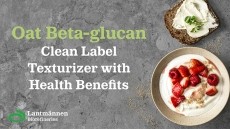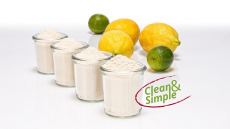Hydrocolloids may enhance white sauces in ready meals
Three hydrocolloids - guar gum, xanthan gum and carboxymethylcellulose – were used to formulate white sauces for ready-to-eat meals, with all three ingredients producing sauces that were indistinguishable from a sauce made with modified starch.
The ingredients, and in particular xanthan, could therefore offer sauce manufacturers an option to overcome the limitations of modified starches, including texture loss and water exudation.
Researchers from Ghent University published their findings in the Journal of Food Engineering.
“All hydrocolloids significantly reduced the amount of water exudate. Hereby especially xanthan proved to be very effective,” wrote the researchers. “Sensory evaluations revealed that for the concentration investigated, only the presence of xanthan could be detected by the consumers as an increased firmness.
“Furthermore there were no differences in taste and general preference between the sauces,” they added.
Formulation details
The Ghent-based scientists prepared a range of white (béchamel) sauces: Guar gum (Cargill), xanthan gum (Cargill) and carboxymethylcellulose (CMC, CP Kelco) used at either 0.1 or 0.25 per cent, or with modified starch (Tate & Lyle).
The hydrocolloids produced thicker sauces, but this decreased following 30 days of refrigeration. The sauces also underwent sensory testing by a panel of 30 volunteers, with the 0.1 per cent sauces evaluated.
According to the results, the sauce formulated with xanthan gum was perceived as firmer than the others, while no other firmness differences were noted.
“Furthermore there were no statistical differences in taste and general preference between all sauces,” wrote the researchers.
“The addition of xanthan was noticed by the consumer as an increased firmness, although this effect did not necessarily imply that the product was less tasty,” they added.
The study was funded by Flanders’ Food as part of the ‘Increasing the Shelf-life of Food Products’ project.
Supporting science
A study last year by Spanish researchers reported that a combination of native starches and hydrocolloids could be a viable option for improving the stability of white sauces during freezing and thawing.
According to findings published in Food Hydrocolloids, sauces made from corn and potato were found to be the most affected by the freeze/thaw cycle, although all the sauces formulated did display a deterioration of quality and stability.
Both hydrocolloids were found to reduce the structural changes that occurred after thawing, with xanthan gum the top performer of the two.
Source: Journal of Food Engineering
Published online ahead of print, doi: 10.1016/j.jfoodeng.2010.02.005
“Effects of non-starch hydrocolloids on the physicochemical properties and stability of a commercial béchamel sauce”
Authors: B. Heyman, F. Depypere, C. Delbaere, K. Dewettinck





















